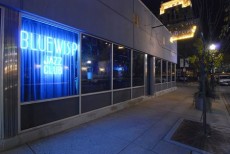
The Jazz Voyager
Blue Wisp Jazz Club: 700 Race Street, Cincinnati, Ohio / Telephone: 513-241-9477 Fax: 5132410431 / Contact: Eddie Felson. Cincinnati’s historic Blue Wisp Jazz Club and Restaurant features national and local acts seven days a week in a casual dining atmosphere. Hours: Sunday thru Thursday 5p-midnight and Friday & Saturday 5p-2am. They offer a full kitchen and bar.
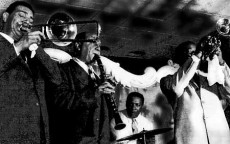
Daily Dose Of Jazz…
George Dorman “Scoops” Carry was born on January 23, 1915 in Chicago, Illinois. His mother a music teacher, his brother Ed a Chicago based bandleader and guitarist put Scoops in good company during his childhood. Starting on horn at the age of eight, he later went on to study at the Chicago College of Music and Iowa University.
He worked with Cassino Simpson, the Midnight Revellers and Boyd Atkin’s Firecrackers in the late 1920s and 30s while still a teenager. In 1931 Carry played with Lucky Millinder in RKO theater palaces. Reuniting with his brother in 1932, the pair co-led an orchestra through the middle of the 1930s. Following this, Scoops played with Zutty Singleton, Fletcher Henderson and Roy Eldridge. By 1938 he was with Art Tatum, a year later with Horace Henderson and at the end of the decade he worked briefly with Darnell Howard before joining Earl Hines’s band in 1940.
Carry remained in Hines’s employ until 1946, working with him in both large and small ensemble settings. After his tenure with Hines, Carry left music and entered law school in 1947, eventually working in the office of the Illinois state attorney.
Scoops Carry, alto saxophonist and clarinetist during the swing era, passed away on August 4, 1970.
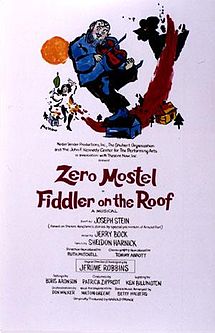
From Broadway To 52nd Street
Fiddler On The Roof opens the curtains at the Alvin theatre on September 22, 1964. Zero Mostel stars in this show that was the first musical to surpass 3000 performances. With 3, 242 it held the record for ten years and reigns as the 16th longest running show in Broadway history Jerry Bock & Sheldon Harnick composed the music for this Tony Award winning production. The tune from the show that would go on to rest alongside other great jazz classics was Matchmaker, Matchmaker.
The Story: In the Jewish village of Anatevka, Russia in 1905 the story follows the life of a dairyman Tevye, the father of five daughters and his attempts to maintain his family and Jewish religious traditions. While outside influences encroach upon their lives, he must cope both with the strong-willed actions of his three older daughters—each one’s choice of husband moves further away from the customs of his faith to finds happiness, love, and financial success through marriage. When all Tevye’s plans fall apart as Russia sustains a revolution, he must flee their destroyed village with his family to America while holding on to his faith and find his own happiness.
Jazz History: The Half Note located at 296 Spring Street on the corner of Hudson Street saw its peak years from 1957 to 1972. Established by Brooklyn-born Mike Canterino who while in the Nay in Florida befriended a local saxophonist named Cannonball Adderley, opened in a desolate location in New York City’s West Village, the club that had been a hard-drinking saloon dubbed the Zombie Bar was renamed and began booking jazz in 1957. Two things separated the Half Note from other clubs. Canterino intentionally integrated his lineups, and changed the industry’s 40-20 set-length standard (40 minutes on, 20 minutes off) by allowing musicians to play as long as they desired—often past the time his cabaret license permitted. Veteran blowers like Ben Webster could play all night long—and did—while experimentalists like Coltrane used the Half Note as a workshop of sorts, turning tunes like the legendary “One Down, One Up” into marathon workouts.
Sponsored By
www.whatissuitetabu.com
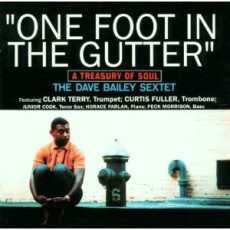
Daily Dose Of Jazz…
Samuel David “Dave” Bailey was born on February 22, 1926 in Portsmouth, Virginia. He studied drumming in New York City at the Music Center Conservatory following his stint in the Air Force in World War II.
Dave played with Herbie Jones from 1951-53, and later with Johnny Hodges, Charles Mingus, Lou Donaldson, Curtis Fuller, Billy Taylor, Art Farmer, Ben Webster, and Horace Silver. Between 1954 and 1968 he played on several recording sessions led by Gerry Mulligan, and during the 60s he also played with Clark Terry, Kenny Dorham, Lee Konitz, Cal Tjader, Roger Kellaway and Bob Brookmeyer.
In 1957 and 1958 he performed at the Newport Jazz Festival and appeared in the documentary “Jazz on a Summer’s Day”. He recorded and released “One Foot In The Gutter” in 1960 on the Spanish label Lonehill Jazz. He followed up that recording with another “Gutter” release of the recording “Two Feet In The Gutter”. Although he is not commonly credited for his role in helping popularize the bossa nova in the ’60s, Bailey learned the rhythm while touring South America in 1959 and helped many American drummers master the sound.
A solid swing and bop drummer, Dave retired from music in 1969 and became a flight instructor. From 1973 he worked in music education in New York and among other pursuits, he served as executive director of The Jazzmobile in New York City.
More Posts: drums
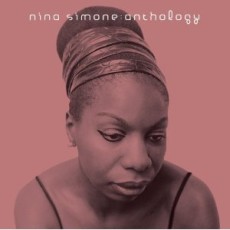
Daily Dose Of Jazz…
Nina Simone was born Eunice Kathleen Waymon on February 21, 1933 in Tryon, North Carolina, the sixth of eight children. She began playing piano at age three and demonstrating a talent with the instrument, she performed at her local church but her concert debut, a classical recital, was given when she was twelve. With the financial assistance of her mother’s employer, Nina was able to take piano lessons, graduated from high school and studied at Julliard School of Music.
Her ambition to become the first black concert pianist was thwarted by the realities of poverty, racial prejudice and denial for full scholarship at the prestigious Curtis Institute of Philadelphia. So changing direction she began playing in a small club in Philadelphia to fund her continuing musical education to become a classical pianist, and was required to sing. Approached by Bethlehem Records, she recorded her debut album “Little Girl Blue” in which “I Loves You, Porgy” became a smash hit in 1958.
Her original style arose from a fusion of gospel and pop songs with classical music accompanied with her expressive jazz-like singing in characteristic low tenor injecting as much of her classical background to give it more depth and quality.
A vocal civil rights activist, Simone’s music became highly influential in the fight black people faced for equal rights at this time in America and was a source of inspiration and enjoyment for her generation, continuing to be for those that follow.
Nina Simone, singer, songwriter, pianist and arranger widely associated with jazz passed away quietly in her sleep after a long battle with breast cancer on April 21, 2003 in Carry-le-Rouet, Bouches-du-Rhone, France. She recorded over forty albums, mostly between 1958 and 1974 but left a legacy of music that has influenced generations of artists from Cat Stevens and Van Morrison to Talib Kweli and Mos Def to Christina Aguilera, Mary J. Blige and John Legend.


